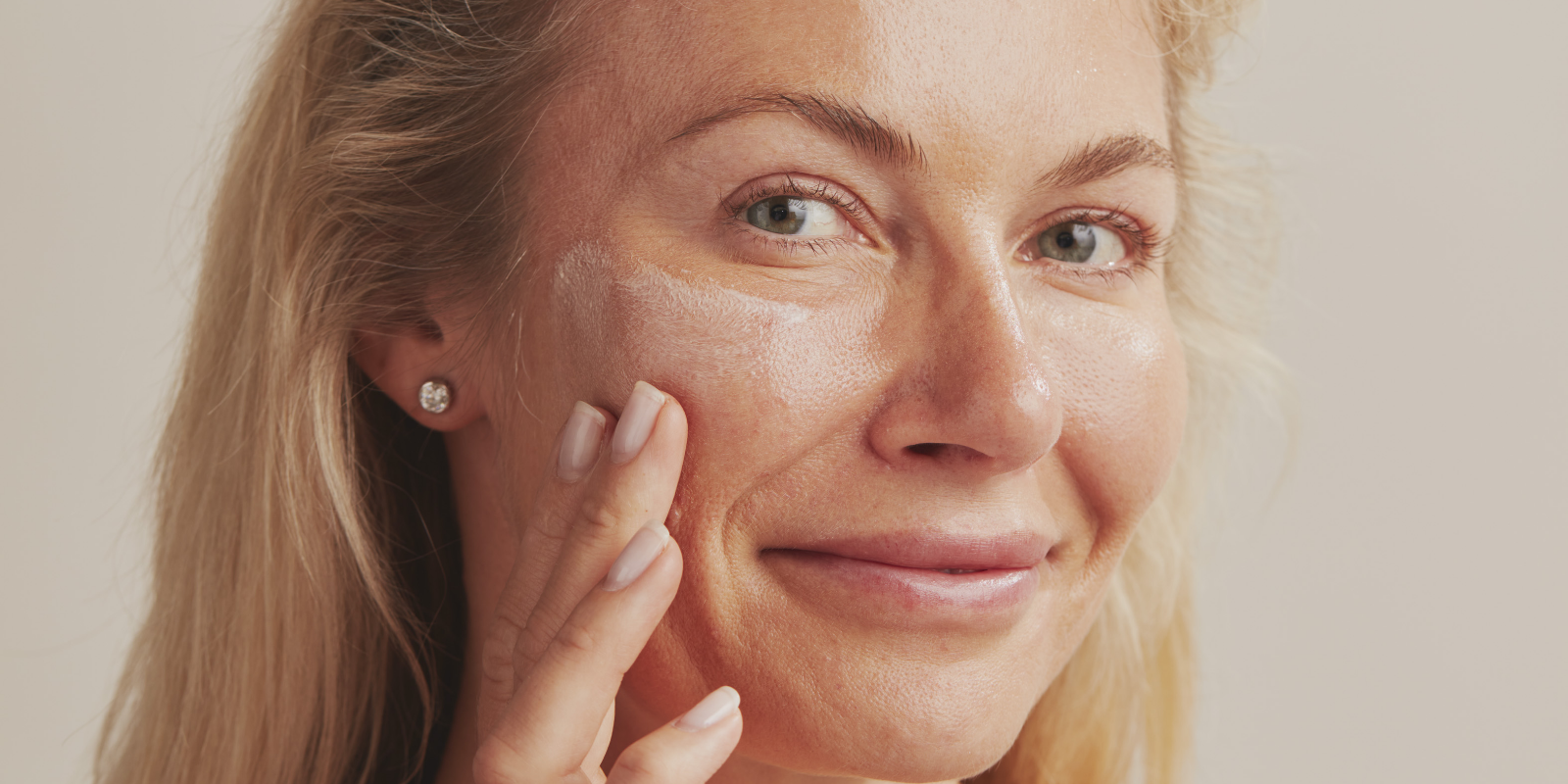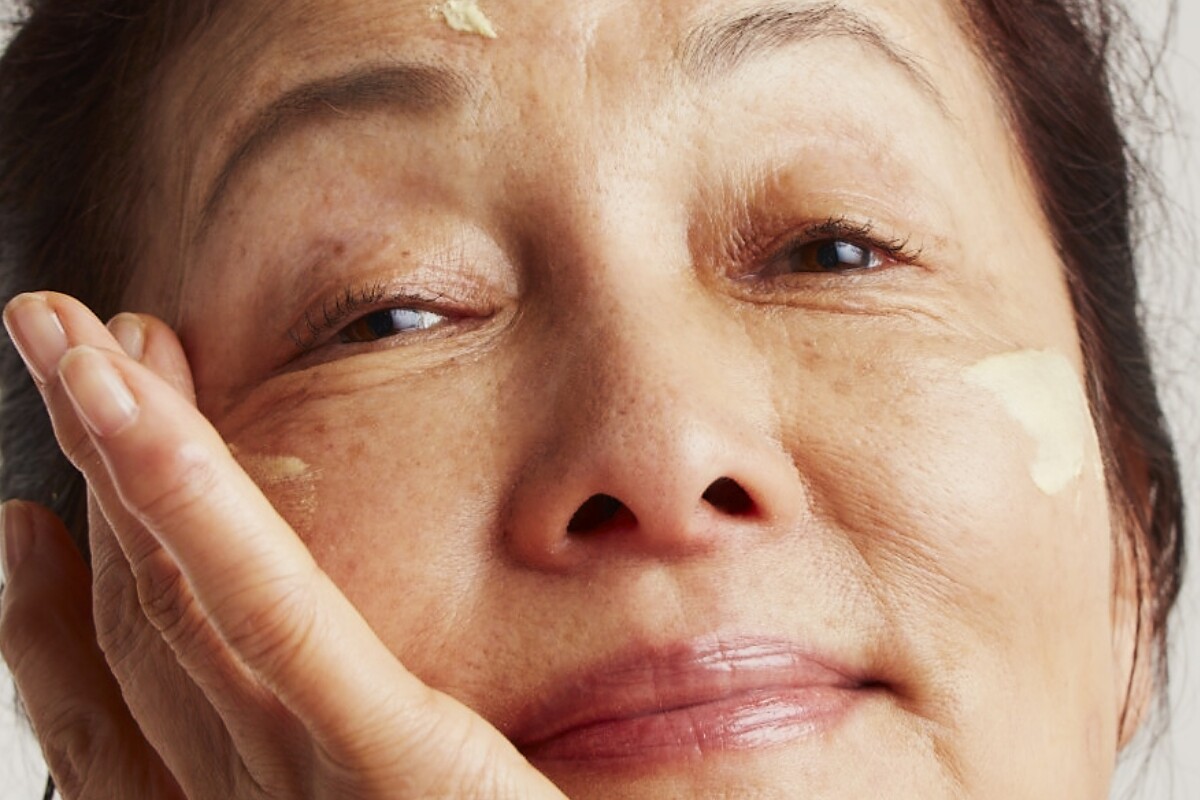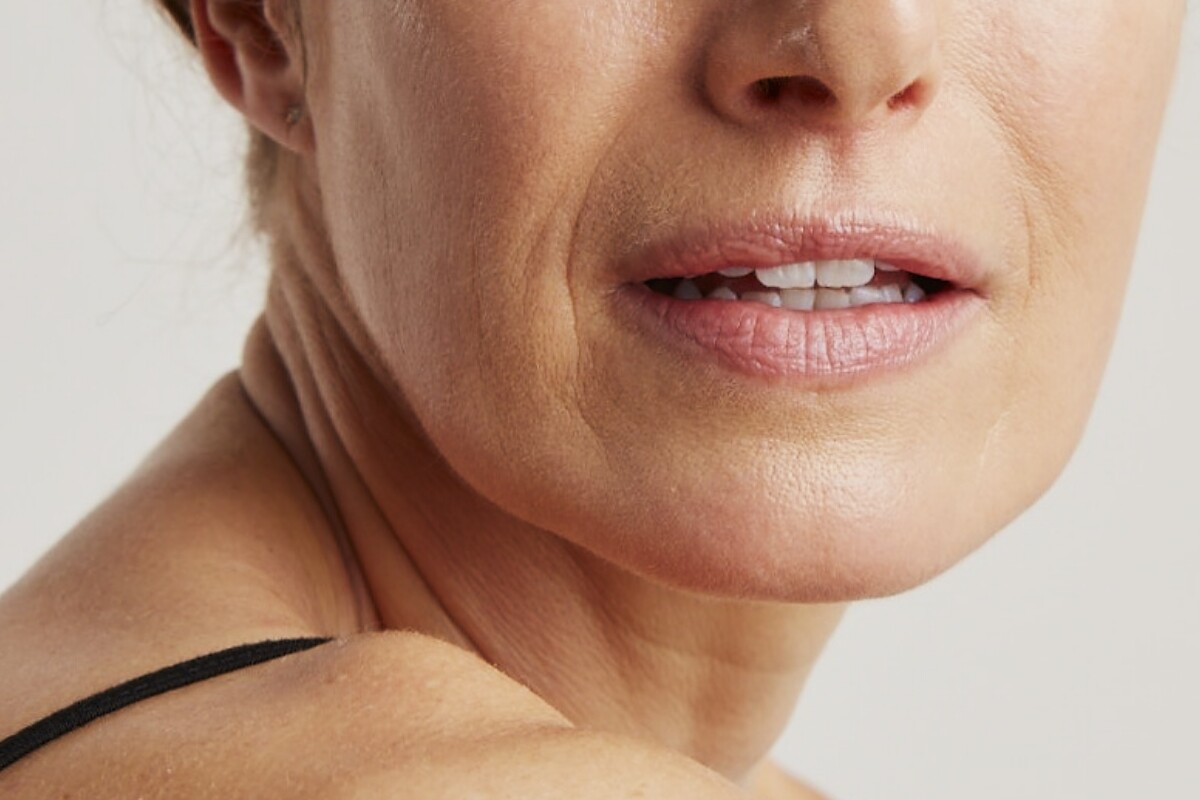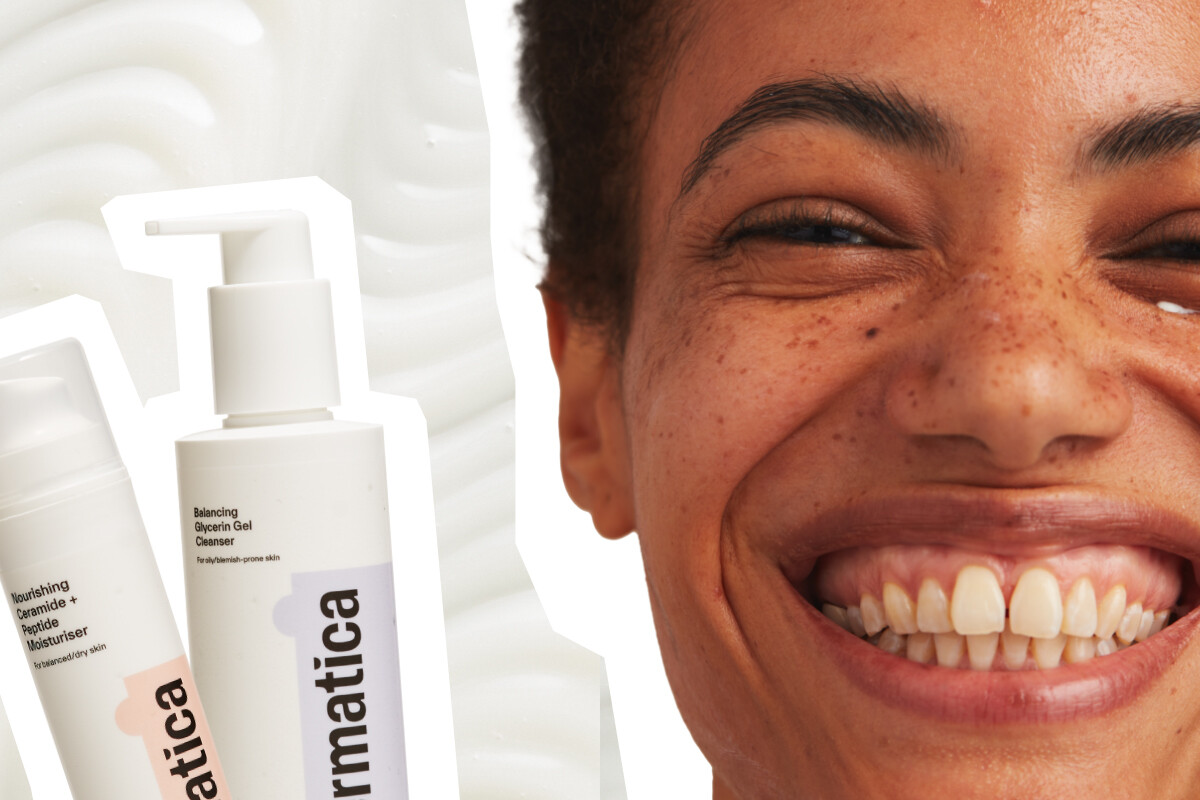You might have noticed your skin change at different points in your cycle. Or during big hormonal shifts like adolescence, pregnancy or the menopause. A much-researched area, there’s ample evidence to track the link between our hormones and our skin. The skin isn’t just affected by hormones – it produces and releases hormones, too.
How hormones affect the skin
The skin’s sebaceous glands and hair follicles are targets for certain hormones, which can cause them to overproduce oil and become blocked, resulting in breakouts. [2] Concentrations of the hormones testosterone, androstenedione and cortisol have a direct correlation with increased sebum production leading to acne breakouts. And because acne is so closely linked to hormones, it’s why some people find contraceptive therapy to be an effective treatment. [3]
But acne isn’t the only skin condition that’s triggered by hormonal changes. There are also more subtle, recurring changes triggered by the fluctuating levels of oestrogen and progesterone associated with the menstrual cycle. [4] For example, studies show that skin barrier function weakens on certain days within the cycle, and its levels of dryness, dermal collagen, sebum production and secretion can all fluctuate. You may also be more susceptible to pigmentation depending on the time of the month, as a result of hormonal changes. [5]
Unsurprisingly, the fun and games don’t stop at the end of menstruation. The menopause and its associated hormones can also trigger skin changes, some of which might be remedied by hormone replacement therapy (HRT) [6]. For the skin, these hormonal changes can manifest as a decrease in how much ceramide your skin produces. These ceramides – a type of fat molecule – play a key role in maintaining the skin barrier function by helping to retain moisture, and protecting it from environmental aggressors. Menopause can also cause a significant decline in your skin’s elasticity. [7]
How to support your skin during hormonal changes
To combat these changes, make sure to also add a broad-spectrum sunscreen and a Vitamin C booster like our Vitamin C 15%: Fresh Batch Ascorbic Acid to your morning skincare routine. Combining potent Vitamin C with sunscreen helps shield your skin from UV and free radical damage, fade dark spots, and boost dermal collagen production over time.
Retinoids like tretinoin can also improve your skin health by fading dark spots and increasing collagen production – improving your skin health, and treating accelerated skin ageing.
Another important thing to do for your skin is to support its protective barrier. Once that’s weakened – from hormonal changes, environmental stresses etc – it becomes vulnerable to dehydration, irritation and imbalance. Ceramides are an important ingredient to lock in moisture and bolster your barrier, particularly as the body’s own natural ceramide production is affected by hormonal changes. Our Restoring Skin Balm and two moisturisers, designed for balanced to dry skin and oily or blemish-prone skin, do just that.
If your skin has been significantly impacted by hormones – for example acne, melasma in pregnancy or hyperpigmentation – it might be time to think about a personalised formula and treatment plan. Our dermatology experts can help give you a better understanding of what high performance ingredients could help dramatically improve the overall health and appearance of your skin. Find out what formulas are suitable for your skin by visiting our website.
References
1. Zouboulis CC. The human skin as a hormone target and an endocrine gland. Hormones (Athens, Greece) [Internet]. 2004 Jan 1;3(1):9–26. Available from: https://www.ncbi.nlm.nih.gov/pubmed/16982574
2. Zouboulis CC. The skin as an endocrine organ. Dermato-Endocrinology [Internet]. 2009 Sep [cited 2020 Jan 1];1(5):250–2. Available from: https://www.ncbi.nlm.nih.gov/pmc/articles/PMC2836429/
3. Borzyszkowska D, Niedzielska M, Kozłowski M, Brodowska A, Przepiera A, Malczyk-Matysiak K, et al. Evaluation of Hormonal Factors in Acne Vulgaris and the Course of Acne Vulgaris Treatment with Contraceptive-Based Therapies in Young Adult Women. Cells. 2022 Dec 16;11(24):4078.
4. Farage MA, Neill S, MacLean AB. Physiological changes associated with the menstrual cycle: a review. Obstetrical & Gynecological Survey [Internet]. 2009 Jan 1;64(1):58–72. Available from: https://www.ncbi.nlm.nih.gov/pubmed/19099613
5. Muizzuddin N, Marenus KD, Schnittger SF, Sullivan M, Maes DH. Effect of systemic hormonal cyclicity on skin. Journal of Cosmetic Science [Internet]. 2005 [cited 2024 Jan 30];56(5):311–21. Available from: https://pubmed.ncbi.nlm.nih.gov/16258697/
6. Kendall AC, Pilkington SM, Wray JR, Newton VL, Griffiths CEM, Bell M, et al. Menopause induces changes to the stratum corneum ceramide profile, which are prevented by hormone replacement therapy. Scientific Reports [Internet]. 2022 Dec 15 [cited 2023 Jun 16];12(1):21715. Available from: https://www.nature.com/articles/s41598-022-26095-0
7. Sumino H, Ichikawa S, Abe M, Endo Y, Ishikawa O, Kurabayashi M. Effects of Aging, Menopause, and Hormone Replacement Therapy on Forearm Skin Elasticity in Women. Journal of the American Geriatrics Society. 2004 Jun;52(6):945–9.
Ash Sharma
Dr Ashwin Sharma is a medical doctor and writer with a particular interest in health technology, artificial intelligence and medical weight loss. He completed his training at the University of Leicester and Imperial College London, and has since been exploring the intersections of medicine, technology, and communication.





